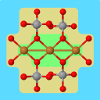Molcas Forum
Support and discussions for Molcas and OpenMolcas users and developers
You are not logged in.
- Topics: Active | Unanswered
Announcement
Please note: The forum's URL has changed. The new URL is: https://molcasforum.univie.ac.at. Please update your bookmarks!
You can choose an avatar and change the default style by going to "Profile" → "Personality" or "Display".Pages: 1
#1 2016-03-14 15:42:19
- Hallmen
- Member
- Registered: 2016-03-14
- Posts: 1
ECP Spin-Orbit Potentials
Hi everybody,
I plan to calculate spin-orbit splittings of a Dy(III) compound and want to compare the splittings for all-electron calculations with the RASSCF/CASPT2/SO-RASSI approach and
calculations with pseudopotentials, where one needs (which is the case for example in Molpro) a corresponding ECP-spin-orbit potential after the RASSCF/CASPT2 pseudopotential-calculation including the scalar-relativistic effects. Using the normal Molcas-SO-operator RASSI-Input, for example of I include different spin states (S=2.5,1.5,0.5) with a different number of roots after the previous ECP-RASSCF calculations for the different spin states
&RASSI &END
MEES
PRINT
1
prcevc 4
Properties
3
'AngMom ' 1
'AngMom ' 2
'AngMom ' 3
NR OF JOBIPHS
3 21 48 17
1 2 3 4 5 6 7 8 9 10 11 12 13 14 15 16 17 18 19 20 21
1 2 3 4 5 6 7 8 9 10 11 12 13 14 15 16 17 18 19 20 21 22 23 24 25 26 27 28 29 30 31 32 33 34 35 36 37 38 39 40 41 42 43 44 45 46 47 48
1 2 3 4 5 6 7 8 9 10 11 12 13 14 15 16 17
SpinOrbit
EJOB
End Of Inputleads to very poor results of course. Is there a corresponding ECP-spin-orbit potential implemented or is it possible to perform ECP-calculations with subsequent
SO-splittings from a SO-RASSI calculation in some reasonable way?
Thank you in advance!
Phil
Last edited by Hallmen (2016-03-15 10:32:21)
Offline
#2 2016-03-21 16:29:13
- nikolay
- Member

- From: Stuttgart
- Registered: 2016-03-21
- Posts: 55
Re: ECP Spin-Orbit Potentials
I think the SOC part of ECP is not implemented in Molcas.
So in order to get SOC splittings one has to use all-electron ANO-RCC basis.
Offline
Pages: 1
